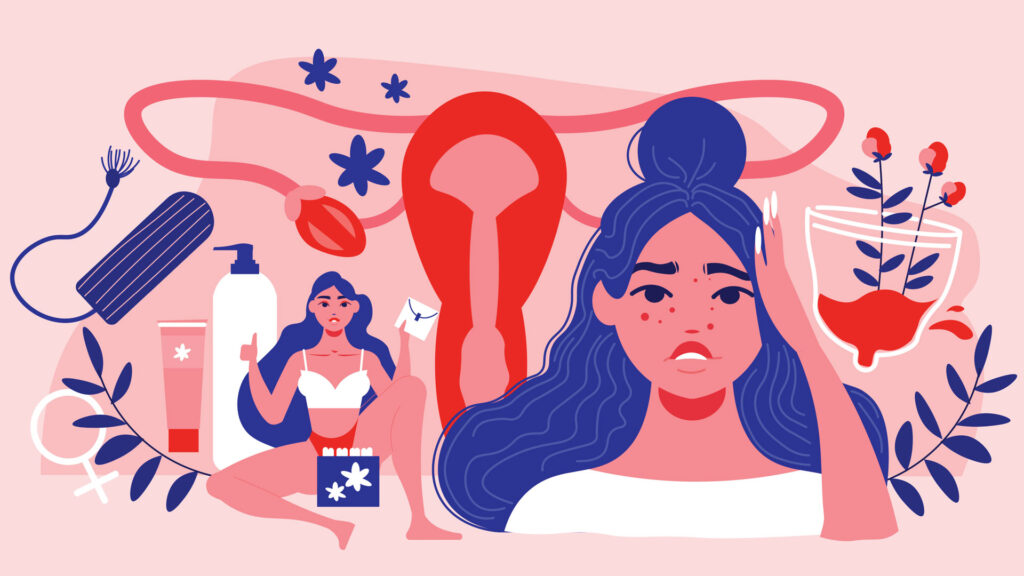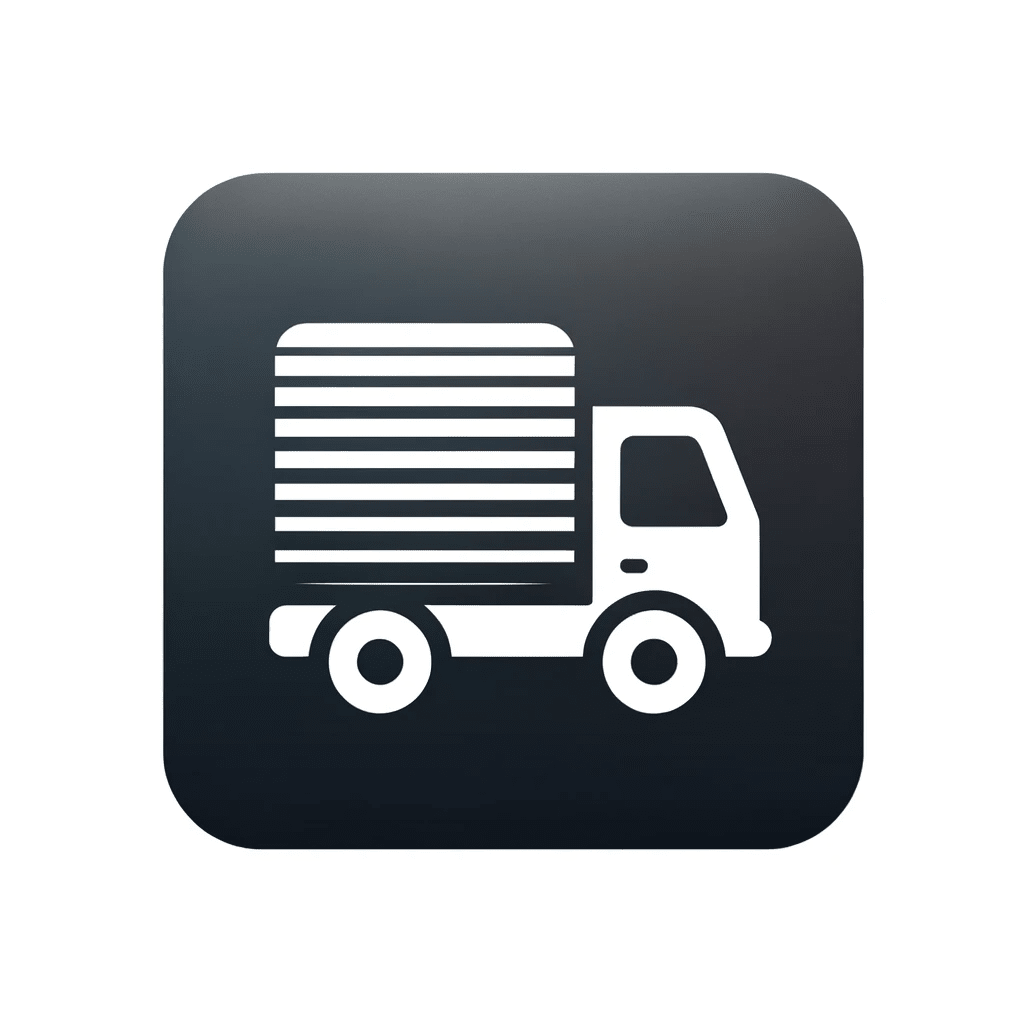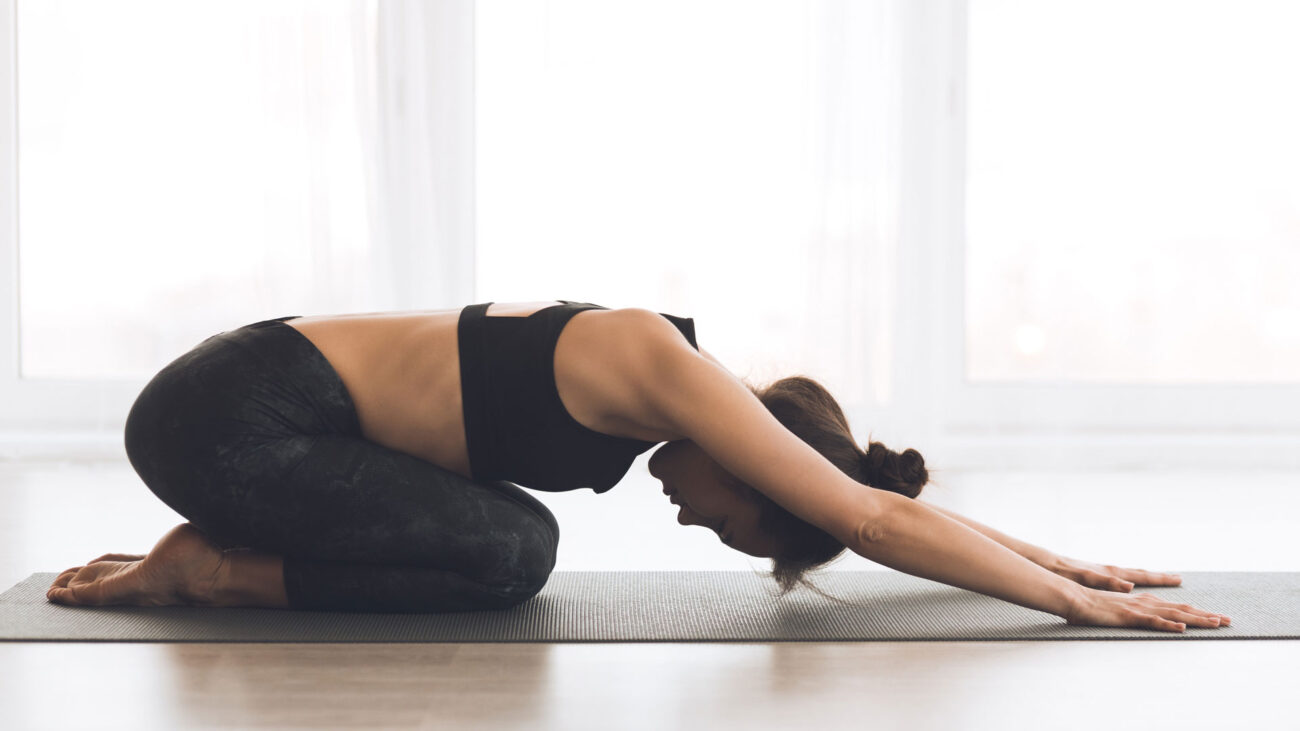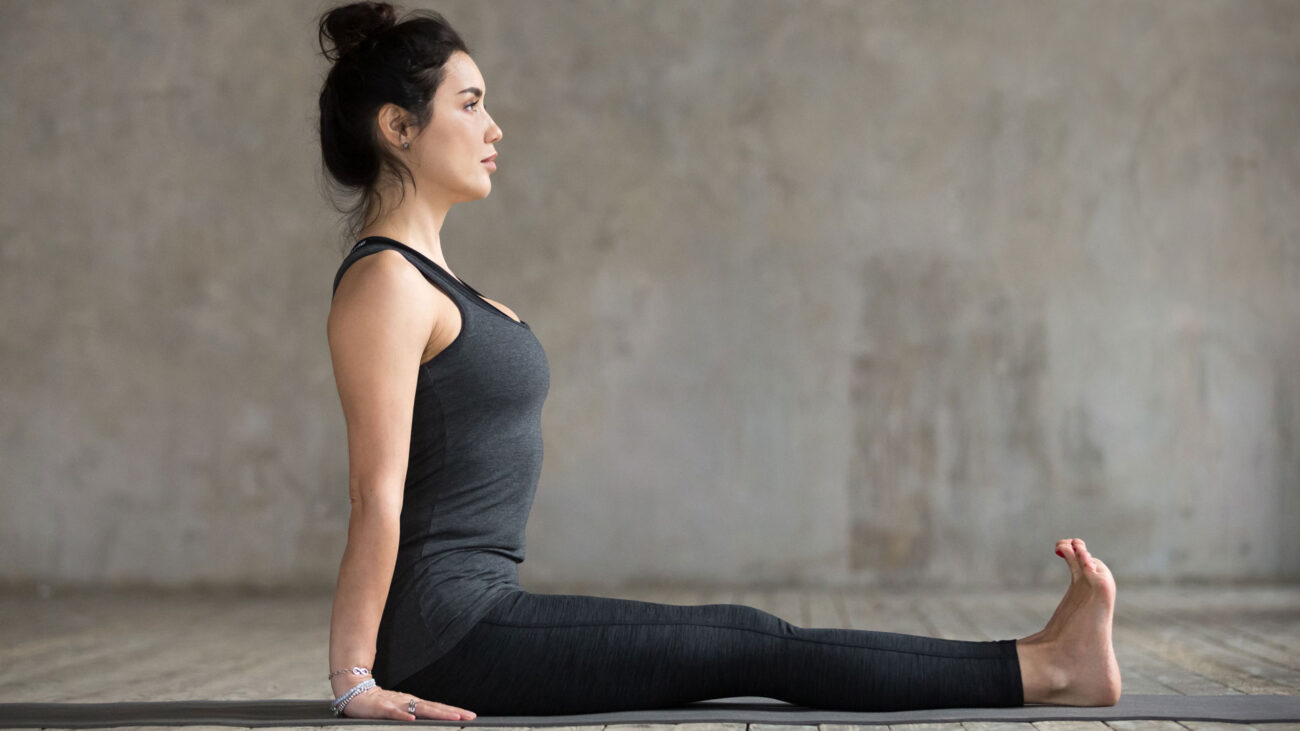Period cramps: causes, how they feel like and what you can do about period pain
- READING TIME 15 MIN
- PUBLISHED November 02, 2023
- AUTHOR Donna
Key takeaways
- A missed period is one of the first signs that you might be pregnant, although it’s not a particularly reliable signal.
- Many preggers experience morning sickness, tiredness, sore breasts and cramps.
- Early pregnancy signs are still telltale, and the best way to be certain is to take a pregnancy test.
Period Cramps: Causes, How They Feel Like and What You Can Do About Period Pain
Why are periods (sometimes) painful
Let’s first look at the subtle magic of your periods. Each month as you ovulate, the inner lining of the uterus thickens. That’s how the body prepares itself for a potential pregnancy – that extra lining would feed and nurture the fertilized egg.
If the egg isn’t fertilized and you don’t get pregnant, your body switches and starts producing hormone-like substances called prostaglandins. These chemicals help break down the now-useless uterus lining which causes bleeding. And as the uterus squeezes and releases the tissue from the vagina, you may feel stabbing abdominal pain.
These pesky cramps are usually most intensive in the first two days of the cycle when the blood flow is also the heaviest. The level of period pain, however, can be different for every woman. Some might notice slight discomfort, others struggle with debilitating pain. Researchers believe that the severity of cramping correlates with the level of prostaglandins – more of the chemical, more twinging and aching you can expect. 1 Period pain is usually worse in the teenage years and then gradually subsides with age or may even stop entirely with pregnancy.
In period pain but also in good company
Periods don’t exactly make you a happy camper. But that’s also ok – some pain and discomfort as you menstruate is normal and common. One Dutch study of almost 43,000 women+ found that 85 percent of participating women+ experience period pain. 2 Up to 29 percent of women+ with periods say the menstrual pain is severe, another study found out. 3
Know the difference: primary and secondary dysmenorrhea
Doctors have a fancier name for period pain – dysmenorrhea. It comes in two types and the difference between them is super important – so read carefully:
Primary dysmenorrhea is caused by the menstrual period itself as the uterus contracts. »A cramping pain in the lower abdomen is common. The pain usually starts one or two days before bleeding and can last a couple of hours or 2–4 days,” gynaecologist Nina Osvald Avgustin explains. She adds that painful menstruation is more common with younger women+ but it can re-emerge before menopause, caused by hormonal imbalances. Other symptoms, such as nausea and vomiting, fatigue, and even diarrhoea, are also more or less common. A Mercury-in-retrograde, period edition!
Sometimes cramping is not “just” period pain. It can point to a certain underlying medical condition.
This kind of menstrual pain is called secondary dysmenorrhea and is a result of problems with the reproductive organs. The most frequent causes of secondary dysmenorrhea are infections, uterine fibroids and endometriosis. »This kind of period pain usually occurs years after the first menstruation. The pain is typically more severe in comparison to primary dysmenorrhea and it lasts longer. It can also gradually worsen, occur outside menstruation or ovulation while standard treatments that work with primary dysmenorrhea are less effective,” Dr. Osvald Avgustin points out.
A common cause of period pain is endometriosis. This is a condition where pieces of womb lining grow outside the womb. One in ten women+ is diagnosed with secondary dysmenorrhea. It mostly affects women+ between 35 and 45 of age. 4
Normal period pain vs “you should check that out”
Pain is subjective and we all tolerate it differently. This also means there is no normal for monthly menstrual cramps.
“The real question is if it affects your life,” Dr. Miriam M. Mottl, gynaecologist and practitioner of sexual medicine, explains. “Can’t go to work or school because of period pain? That’s already a clear sign that you have to do something about it. Does it get worse by each month and has gotten worse over the years? If yes, we may suspect a medical cause such as endometriosis,” she points out.
There are also other signs that might indicate a more serious condition. Dr. Osvald Avgustin lays them down:
- Blood in the urine or in the stool
- Period bleeding that lasts more than five days
- Very intense cramping pain
- Spotting between periods
- Diarrhoea or vomiting
- Very heavy bleeding (having to change a tampon every two hours as opposed to after four hours)
- Larger blood clots in your flow (small pieces of cervical mucus are usually not a big deal if they get mixed with your period blood)
In the end you know your body best – if something seems off, we encourage you to make an appointment with your gynaecologist. They may conduct a physical exam, lab test, ultrasound or perform a biopsy.

How to relieve the period pain
There is only one rule here: do what feels good for you. If you’re looking for suggestions, Dr. Mottl says, “ask your mother, sister or your best friend. Try different things a few times and find out what helps you. If it means eating a cake, then go for it.” Doctor Osvald Avgustin additionally recommends an all-around healthy lifestyle – try to avoid stress, don’t drink too much coffee, exercise regularly and try to get good sleep.
We’ve compiled a rich list of treatments and remedies that might help take the edge off the menstrual pain. If we missed something that helped you, let us know on Instagram.
Pop a painkiller
The first-line treatments are the so-called nonsteroidal anti-inflammatory drugs (NSAIDs). Fancy name, but these drugs are often everyday painkillers, such as ibuprofen and aspirin. And they often work! One scientific review analysed 80 trials and concluded that these drugs appear to be “very effective” in the good fight against menstrual pain.
As with any other drug, NSAID might cause side effects – 11 to 14 percent of women+ experienced stomach problems, headaches or drowsiness. 5 NSAID could trigger acid reflux or cause ulcers (painful sores in the stomach lining).
We suggest you first ask your doctor and make sure NSAIDs are OK for you. Doctors might also prescribe stronger dosages to fight period pain if the over-the-counter painkillers don’t offer enough menstrual pain relief.
As a side note, paracetamol, another popular painkiller, is not considered NSAID. But because paracetamol doesn’t mess with your tummy, they are the prefered painkillers if you have an upset stomach. You can use it to treat menstrual pain as well, although studies have shown that it’s less effective than NSAID. Antispasmodic drugs are also known to relieve period cramps. 6
Having said all that, there is still a considerable number of women+ – by some estimates 18 percent – who are unresponsive to painkillers. 7 That and the side effects these drugs may cause leaves them and their doctors to pursue other options. Let’s look at them.
Consider birth control pills
Birth control pills work because they decrease the level of prostaglandins — chemicals your body produces to make the muscles of the uterus contract. With fewer contractions, there is less menstrual pain.
Not all contraceptives are made the same though. Birth control pills that contain both estrogen and progestin relieve period pain more effectively than placebo. 8 Smaller trials have even reported response rates as high as 80 percent. 9 The helping pills should kick in relatively fast; in most cases in one to two cycles.
That said, progestin-only pills don’t necessarily prevent you from ovulating, but they may still thin the lining of the uterus and help reduce the period pain. Which contraceptives are right for you then? Talk to your doctor about it, consider the side effects and decide on the solution that best fits your needs.
Some like it hot
When the period pain kicks in, bring on those thermos bottles and heat pads! They have no side effects (unless you have very sensitive skin or you burn yourself which is a serious thing – so be careful!).
Applying heat to the lower abdomen may relax your womb muscle tissues and, by extension, ease the menstrual pain. Even more, one small study of eighty-four patients suggests that this kind of therapy is as effective as taking a painkiller. 10
Bonus tip: if you’re more of a DIY person, you can easily make heat pouches on your own. Take one knee-high sock, fill it with rice (as long as it is not instant) and put it in a microwave until warm or hot. It’s super convenient – you simply place the rice sock back in the microwave once the heat subsides.
Alternatively, you can also use special self-adhesive relief patches that work on the basis of menthol or ginger.
Soothe your body with some gentle yoga
We completely understand if you want to spend your first period day safely nestled in bed but doing some gentle exercises could do you good.
Don’t push yourself too hard here, low-impact exercises such as walking, swimming or soft yoga will already increase your blood circulation, relax the body, help release endorphins and simply make you feel better.
For all of you yoga-lovers: target your belly, pelvis, hips, and lower back for pain relief. 11 Certain yoga poses are known to help the most – see the demonstration from our in-house yogi:
Be mindful of what you eat and drink
The number one rule during menstruation is to stay hydrated. Drink at least six to eight glasses of water daily which decreases the chances of becoming bloated. Making tea is also a good idea, especially if it is raspberry leaf, chamomile, ginger or peppermint. All of the ingredients have anti-inflammatory properties and can help with period cramps. 12131415
When it comes to foods, think of nutrition that fights the inflammation. These include fruits and veggies, such as tomatoes, squash, bell peppers, berries and avocados. Add apples & nuts to your diet and throw in kale, spinach, sprouts, broccoli and other green leafy vegetables as well.
If you’re thinking about deploying supplements to your anti-cramp diet, consider taking vitamins B1, D and E. Calcium and magnesium may also help as well as omega 3 fatty acids, found in fish oil or flaxseed oil.
On other hand, avoid foods that make you thirsty, bloaty or upset your stomach in other ways. The usual suspects are salty and spicy foods and alcohol. Try to avoid coffee as well – it restricts blood flow from the uterus and it may worsen the menstrual cramps.
Take advantage of the herb power
Herbs that relax and reduce inflammation may also provide a much-needed relief from period pain. One study, for instance, compared the effects of aromatherapy abdominal massage using a blend of cinnamon, clove, rose, and lavender essential oils with only a group that received only almond base oil. They found out that the aromatherapy group “level and duration of menstrual pain were significantly lower. 16
What else can you try for menstrual cramps relief? Ginger is one of our most beloved plants. In one study, this warming herb has been “as effective as ibuprofen in relieving menstrual pain”. Ginger has also been observed to fight fatigue commonly associated with premenstrual syndrome. 17
Consider adding fennel to your diet. This bulbous vegetable with a liquorice-like flavour contains anethole which is a substance with anti-spasm effects. 18
Or make yourself a nice cup of tea out of cumin seeds to relieve period pain. They have anti-inflammatory properties as well. 19 Parsley, meanwhile, is bursting with magnesium, a natural relaxant. 20 It’s also rich in calcium, vitamin B, and iron.
Tea from raspberry leaves has also been used for centuries to tone the uterus cramping. Raspberry is full of nutrients including iron, calcium, manganese, magnesium and a rainbow of vitamins. The European Medicines Agency said is can be used for “relief of minor spasms associated with menstrual periods. 21 Learn more about the raspberry leaves in our dedicated blog.
Harness electricity
Another possible solution you might want to consider is transcutaneous electrical nerve stimulation (TENS). It works by using a small device that sends low-voltage electric currents at different intensities. The pulses suppress pain signals and encourage the body to produce more endorphins and enkephalins – our own natural painkillers. TENS is safe and easy to use which makes it an especially appealing alternative for women+ who don’t react well to chemicals.
But does it work to reduce menstrual pain? The results are mixed. In one self-reported study, 90 percent of women+ reported “marked to moderate pain relief”, 22 in other studies TENS didn’t seem to work. 23
Try acupuncture
Acupuncture (inserting thin needles at certain points on your body) might also help relieve period pain. One study, conducted on 74 women+ in Australia, has shown that acupuncture treatment reduced menstrual pain intensity and duration after three months of treatment. 24 Keep in mind, however, that the treatment is not investigated well enough to be considered generally effective.
Get it on
This one doesn’t need any confirmation from research or blessings from doctors. Throwing yourself a hand party (or/and having sex) just feels good and there is no reason you shouldn’t do it on your period. Even better, it just may help with the cramps as well.
During the orgasm, the body releases a rush of dopamine and oxytocin, pleasure chemicals that are considered natural pain relievers. 25 Sex or solo play also increases blood flow to the uteruses, which can help alleviate menstrual pain.

Relax, take it easy
Here is something we all kind of knew already: stress makes periods worse. Women+, suffering from chronic stress, are twice as likely to experience period pain as women+ with low levels of stress in their lives, according to a Chinese study with 388 participants. 26 Many women+ we talked to for this article also said that psychological stress worsens their menstrual cramps. Science says that when you’re worried too much, your body releases cortisol that may increase muscle contractions in your uterus. 27
What can you do about it? Try to get enough sleep, do yoga, tai-chi or meditation. A small study published in the journal Mindfulness found that meditating can potentially change your attitude toward period pain. Aside from diminishing pesky cramps, the practice can also alleviate physical PMS symptoms like water retention and sweating, according to study. 28
What to avoid
There are foods, drinks and habits that you should probably try to avoid as you menstruate. They could worsen the symptoms:
- Coffee may narrow blood vessels which decreases the blood supply to the lining and muscles of the uterus. That can cause even more cramping and period pain.
- Nicotine inhibits blood flow to your uterus. Current smokers were 41 percent more likely to deal with consistently painful menstruation, a 2014 Tobacco Control study of over 9,000 women+ found out. 29
- Skipping bedtime affects hormone levels which can lead to heavier or more painful periods than usual.
- Salty, fatty, sweet foods increase water retention and can cause bloating. Snacks and sweets, fries and pizza all sound delicious, but may also help produce more prostaglandins – chemicals that cause the uterus to contract.
Advocate for yourself and your health
Many women+ are told that pain is just part of the period deal. That is simply not true. These misperceptions are a result of awareness and knowledge gaps. 30 As a result, many women+ don’t talk to the doctors about the pain they experience. They’ll also be more likely to minimize it until it becomes a serious problem. In the United States, for example, up to 86 percent of women+ with dysmenorrhea do not seek health care. 31 A Dutch survey found that half of the women+ won’t even tell their family that menstrual symptoms were the reason for not performing their daily tasks. 32
There is no need to suffer in silence. We encourage you to exchange ideas with your friends and family. Talk to your doctor and other experts. If you’re comfortable, bring the discussion on social media – you’ll definitely find many comforting and empowering voices there. Also – advocate for your health all the way through. If you’re suffering from period-related pain and your doctor recommends something that doesn’t make sense to you, “you can always go to another gynaecologist”, Dr. Miriam Mottl suggests.
The scope of the problem is slowly being acknowledged in the public as well. British olympic athlete Eilish McColgan said that she had to pull out of a race because she felt “flat, heavy, tired”, as she explained in her interview for BBC. Former First Lady Michelle Obama also recognized the scope of the problem with one of her tweets:
“Why are girls still missing so many days of school because of their menstrual cycles?” —The First Lady on the barriers to girls' education— First Lady- Archived (@FLOTUS44) April 13, 2016

Period time, me-time
You could take the period time as an opportunity for a gentle monthly reset. Use it to set boundaries and articulate your needs – without any guilt. Acknowledge that it’s ok to be alone. And cranky or moody. Use the time to soothe your body and nourish your soul. Reflect on your relationships, career and life goals. Plan for the future. Read what makes you happy, write poems, enjoy movies. Don’t overthink. Use it as a respite from daily chores and work responsibilities. And, finally, take it from doctor Mottl: “Periods can be something beautiful. From the first one on, they are a sign that you are in an adult, fertile part of your life. It’s actually a miracle what the woman does every month.”
REFERENCES
- https://www.mayoclinic.org/diseases-conditions/menstrual-cramps/symptoms-causes/syc-20374938
- https://pubmed.ncbi.nlm.nih.gov/30885768/
- https://pubmed.ncbi.nlm.nih.gov/24284871/
- https://www.ncbi.nlm.nih.gov/books/NBK279324/
- https://www.cochrane.org/CD001751/MENSTR_nonsteroidal-anti-inflammatory-drugs-dysmenorrhoea
- https://pubmed.ncbi.nlm.nih.gov/11708572/
- https://www.ncbi.nlm.nih.gov/pmc/articles/PMC5839921/
- https://www.cochranelibrary.com/cdsr/doi/10.1002/14651858.CD002120.pub3/information?cookiesEnabled
- https://www.aafp.org/afp/2014/0301/p341.html#afp20140301p341-b25
- https://www.sciencedirect.com/science/article/abs/pii/S0029784400011637
- https://pubmed.ncbi.nlm.nih.gov/29037637/
- https://www.ncbi.nlm.nih.gov/pmc/articles/PMC6970572
- https://www.ncbi.nlm.nih.gov/pmc/articles/PMC4979258/
- https://www.ncbi.nlm.nih.gov/pmc/articles/PMC4040198/
- https://pubmed.ncbi.nlm.nih.gov/19216660/
- https://www.ncbi.nlm.nih.gov/pmc/articles/PMC3638625/
- https://www.liebertpub.com/doi/10.1089/acm.2008.0311
- https://www.ncbi.nlm.nih.gov/pmc/articles/PMC6539827/
- https://www.ncbi.nlm.nih.gov/pmc/articles/PMC4575746/
- https://www.healthline.com/nutrition/parsley
- https://www.ema.europa.eu/en/documents/herbal-summary/raspberry-leaf-summary-public_en.pdf
- https://pubmed.ncbi.nlm.nih.gov/8070122/
- https://www.practicalpainmanagement.com/pain/other/tens-treatment-primary-dysmenorrhea
- https://journals.plos.org/plosone/article?id=10.1371/journal.pone.0180177#sec028
- https://bit.ly/38u8d9U
- https://oem.bmj.com/content/oemed/61/12/1021.full.pdf
- http://ejournal-kertacendekia.id/index.php/ICKCNA/article/view/98
- https://link.springer.com/article/10.1007/s12671-011-0041-x
- http://tobaccocontrol.bmj.com/content/early/2014/10/28/tobaccocontrol-2014-051920
- https://www.ncbi.nlm.nih.gov/pmc/articles/PMC5746430/
- https://www.researchgate.net/publication/318248702_Reasons_women_do_not_seek_health_care_for_dysmenorrhea
- https://www.ajog.org/article/S0002-9378(19)30427-2/abstract




